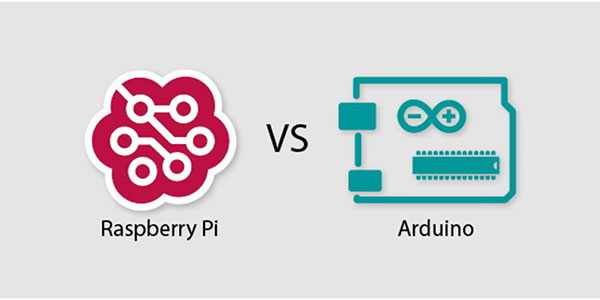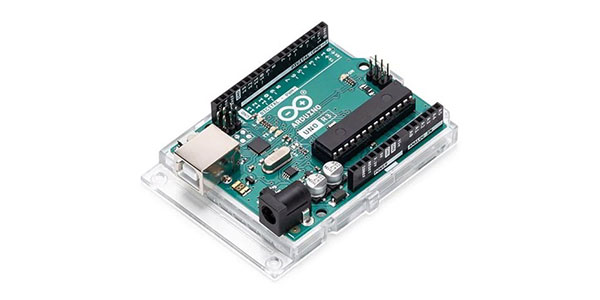As more people get interested in their own hardware control projects, Arduino and Raspberry Pi have emerged as the most popular controller boards on the market today. While the latter remains more popular, it may not be the best option for all projects. Whether you want to set up an entire IOT system in your home or just want to learn more about computing, it is important to understand the differences between Arduino and Raspberry Pi.
First, understand that both are very similar in the fact that they have simple designs, single boards, a CPU, capacitors, resistors, onboard memory, and connectivity options. They are both popular among hobbyists and do-it-yourself enthusiasts in the tech realm. That is where the similarities stop, however. They are in fact quite different and serve diverse purposes.
All About Arduino
The Arduino board was created way back in 2005. It is primarily used in an Italian interactive design school. Students could use it to create devices that interact with the surrounding world. It focused on sensors and actuators as the main components. It continues in that capacity today and is primarily considered a microcontroller.
Today, the most popular Arduino Uno board uses open-source software and libraries that anyone can access, manipulate, or develop programs with. People can actually make their own board if they choose. They are customizable with a variety of expansion boards, I/O pins, and other circuits and elements. This gives it a high degree of flexibility.
Common Use Cases
The most popular reasons to choose Arduino include automating repetitive tasks and implementing Internet of Things connectivity. For example, this board can manage turning lights on and off dependent on sensory information, opening and closing garage doors, or similar things. It is also quite possible to use Arduino for entertainment purposes, art projects like kinetic sculptures and LED displays, and even customized game controllers.
Raspberry Pi Explained
Raspberry Pi was created in 2012 at the United Kingdom’s University of Cambridge. Instead of simply controlling external devices, this board is a microprocessor that works as a tiny computer all of its own. In fact, it is very similar to any desktop or laptop computer except that it does not have a monitor or other peripherals built in. All of these can be connected as the user desires.
This is one of the main differences between the two popular options. Raspberry Pi has a processor, RAM and other storage, connectors, graphic capabilities, and more. It runs any operating system that you choose and can be hooked up to standard hardware with these. The onboard operating system is based on Linux, which means users can work with all popular programming languages to make the changes they desire.
Common Use Cases
In general, this board has more complex capabilities. While you can use it for IOT or simple setups, it can also operate robotic devices, monitor internal conditions for thermostatic control, and more. People turn to this option to power interconnected home entertainment centers, build their own desktop computer, create complex automation systems, and build security setups.
The Differences Between Popular DIY Tech
Now that you understand what Arduino and Raspberry Pi are, you can begin to make some decisions about which one would serve your purposes best. Beginners and experienced tech fans unlike still need extra information about the differences between them in order to make an informed choice.
What It Is – Single Board Computer vs. Microcontroller
Raspberry Pi is a single board computer or SBC. It is essentially the same as a desktop computer or the inner workings of a laptop in a much smaller form. Just like a standard computer can tackle many tasks at the same time and control things automatically, so too can a single board computer. Of course, it still has limitations and cannot replace the most powerful machines by itself. Arduino is a microcontroller platform. It is much simpler and can execute only one program at a time.
Differences in Processing Power
Once you understand what SBC’s and microcontrollers are, it is easy to see that Raspberry Pi is generally more powerful than in Arduino. It can process not only multiple things at the same time but at a much greater speed. This makes it the smart choice for full computer capabilities. If you are interested in expanding your skills in the tech world, it may make sense to choose the SBC from the start. Because it can process multiple things more effectively, it does provide more options for expansion.
Presence of an Operating System
Arduino boards manage code directly on the microcontroller that makes up the entire processing power of this choice. This much simpler set up is largely responsible for its reduced capabilities and inability to manage more than one task at the same time. The alternative has its own operating system (OS), which is usually a Linux-based one, but can also be integrated with other options as the user sees fit.
Built in Connectivity Options
As a microcontroller, Arduino is not really built to plug into a lot of other hardware like Raspberry Pi is. This is generally because of its simpler use cases, such as using onboard sensors to trigger an action like turning something on and off. The SBC, on the other hand, comes with built-in ports and wireless connectivity options so that you can use it for more diverse purposes. These include USB ports, ethernet sockets, Wi-Fi and Bluetooth, HDMI, and audio ports. These give many more options than Arduino comes with.
General Purpose and More – Input/Output Pins
Both products have general purpose I/O pins. As with all other characteristics, Arduino offers fewer and simpler ones. This pertains to both digital and analog purposes. The GP I/O pins on Raspberry Pi also offer digital and analog capabilities but also extend to UART, I2C, and SPI interfaces. These are different communication protocols embedded in various types of electronics that enable data exchange and communication
How Much Power?
While both Arduino and Raspberry Pi certainly have enough power consumption capabilities to do what they are intended to do, the latter outpaces the former in this field too. Arduino’s lower use levels are actually beneficial for uses that require battery power support for long-term operations. It simply makes sense that a full microcomputer like Raspberry Pi consumes more power. This is something to consider carefully if you intend to run something 24/7 such as an IOT automation. You do not want to change batteries or recharge them too frequently.
Differences in Effective Application
Some common use cases were covered above. It is important to fully comprehend which product suits your specific project better. Arduino may be the simpler option but also may work more seamlessly and efficiently for real-time control. Raspberry Pi is the best option for replacing full computer systems. This is especially important to know for hobbyists who want to pursue their interest as far as possible. Why limit yourself to one or two simple capabilities just to save on cost and power consumption?
Which One Is Better for Beginners?
This is a very popular question from people who want to dive into the world of do-it-yourself electronics and computing. Even if you fully understand all the differences between Arduino and Raspberry Pi listed above, it may be difficult to understand which one is right for you.
Arduino is simpler. It has a straightforward programming environment and fewer capabilities, which may cut down the learning time considerably. However, it is not a steppingstone to using Raspberry Pi. It makes more sense to start with the option that works for your desired use case. Both have robust online communities and many free resources to help beginners get started and succeed.
Cost and Value Considerations
One compared to purchasing a whole computer or mobile device, both Arduino and Raspberry Pi offer considerable savings. The simpler microcontroller option, Arduino, is less expensive. You can find them anywhere from around $35 and up from various online retailers. Raspberry Pi single board computers can cost twice as much depending on the specific model and if you also purchase accessories for connectivity components. Still, they are both highly affordable for hobbyists and professionals who want to expand their knowledge and capabilities.
In Conclusion
There is no doubt why both Arduino and Raspberry Pi have become so popular for tech enthusiasts, developers, and do-it-yourself hobbyists. If you are interested in getting started down one of these roads or are already skilled enough to start creating your own smart home set up or robotic system, it is important to fully understand the differences.
Both serve as powerful tools for their specific use cases. Arduino shines in real-time control application projects and low-power consumption setups. Raspberry Pi, on the other hand, offers more multi-faceted possibilities. With its single-board computer set up, complete operating system, and increased connection options, it is much more versatile for future expansion. Ultimately, your level of skill, knowledge, interest, and the project you want to complete will determine which of these two popular options you choose.




